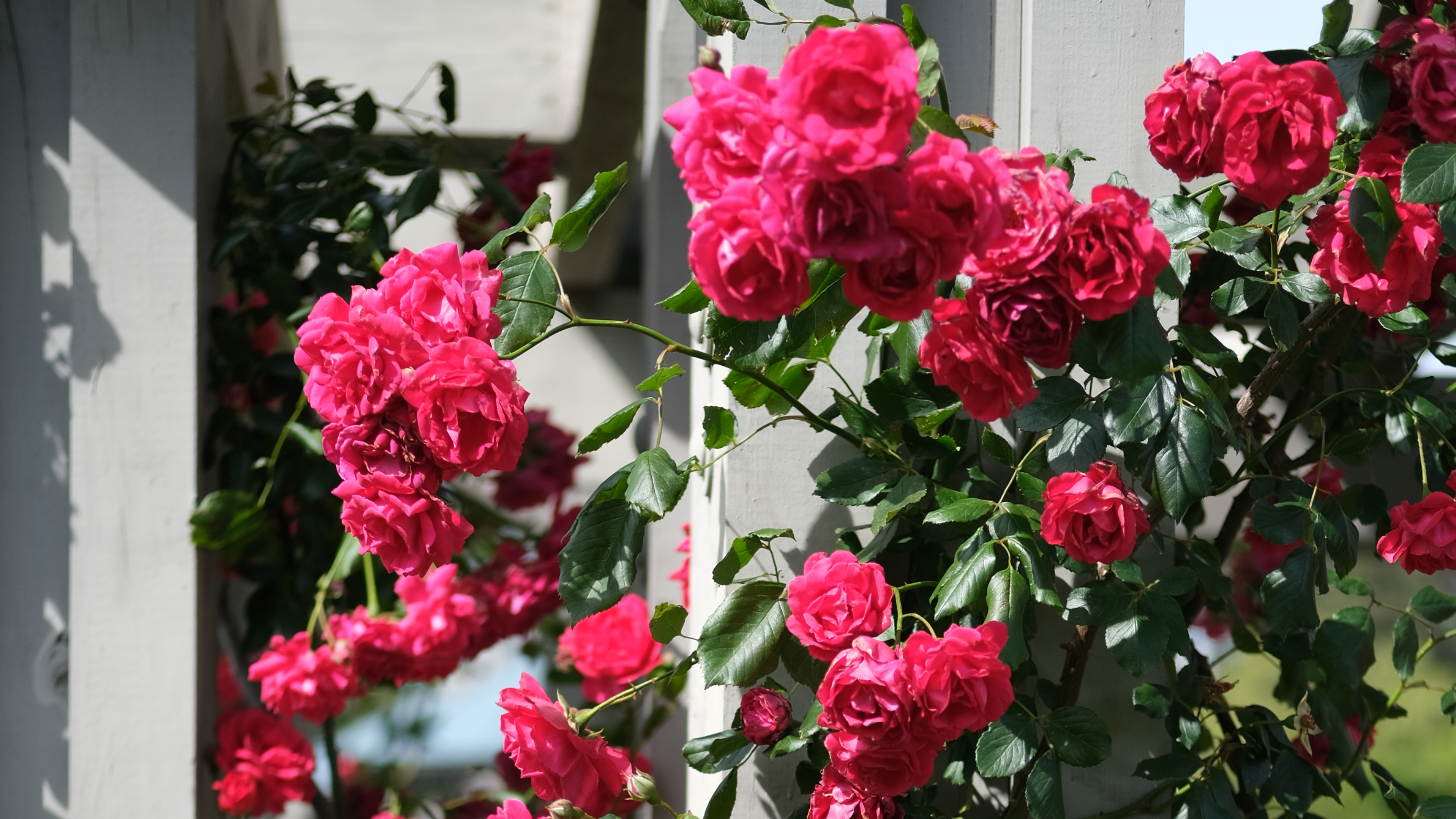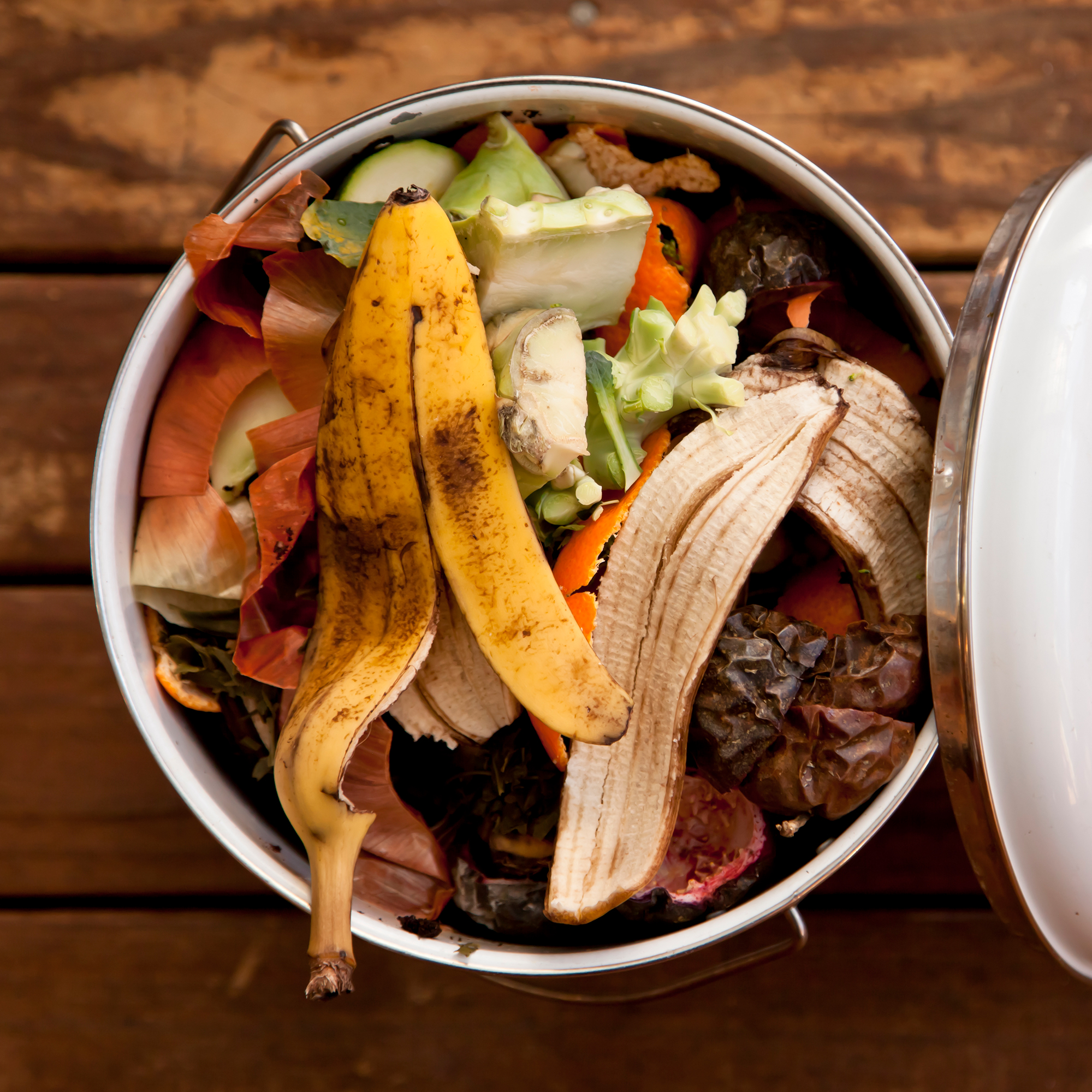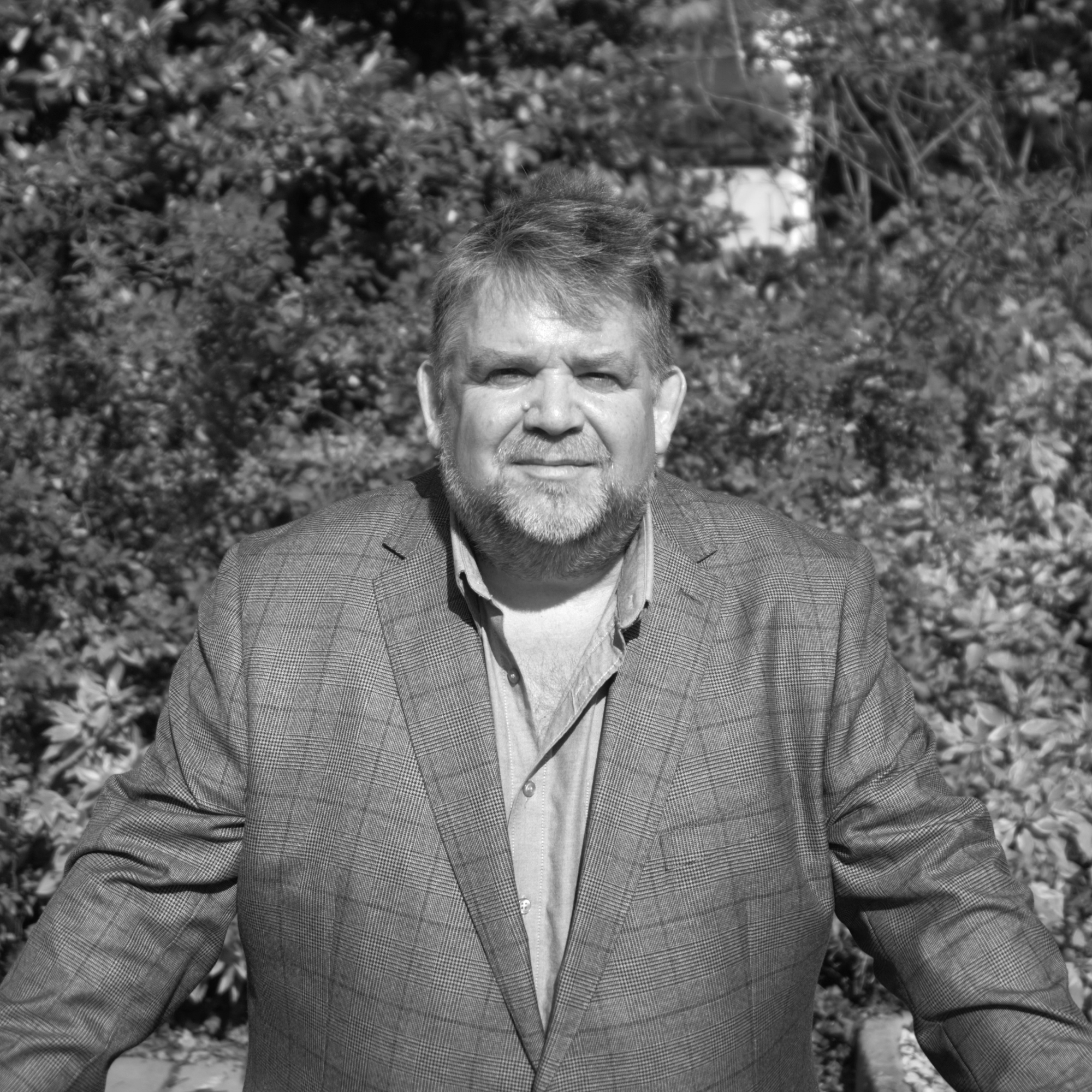How to make your own rose fertiliser for the biggest and brightest blooms yet
No, you don’t have to spend a fortune on store-bought fertilisers


If you have roses in your garden, you’ll know how much beauty and romance they can bring to the table. But as roses have a reputation for being high maintenance, you might assume they’re also expensive to look after. But they’re not if you make your own rose fertiliser.
Famed for their vibrant and fragrant blooms, knowing how to grow roses is the first step to filling your garden with this popular perennial. However, ongoing care is really important as their beauty can dwindle without the proper TLC.
In fact, many of the most common rose problems and diseases can be solved with the right nutrients - and that’s where a rose fertiliser comes into the picture. And just as you can make your own tomato fertiliser, you’ll be happy to know you can also make your own rose fertiliser.
How to make your own rose fertiliser
‘Roses are cherished for their beauty and fragrance, but growing them requires proper care and feeding,’ explains Bish from @bearded.growers.
‘Making your own rose fertiliser at home not only saves money but also ensures you know exactly what your plants are getting.’ So, have a look through your cupboards for the ingredients below to make your own rose fertiliser.
1. Banana peel fertiliser

A rose plant wouldn’t be half as beautiful without the stunning blooms that come with it. And if you want to make your roses bloom bigger and brighter every year, you might be interested to know that the key ingredient is sitting in your fruit bowl.
‘Chop the banana peels into small pieces. Then, bury the pieces around the base of your rose bush, about 1-2 inches deep,' advises Bish. 'Banana peels decompose quickly, releasing potassium and phosphorous, essential for blooming.’
Sign up to our newsletter for style inspiration, real homes, project and garden advice and shopping know-how
This homemade rose fertiliser also works if you’re growing potted roses. Instead of burying the banana peels directly into the ground, bury them in the pots.
2. Epsom salt fertiliser

When you think of Epsom salts, you probably think of relaxing, pain-relieving baths. But it turns out that having a pack of Epsom salts in the shed can come in pretty handy.
‘Epsom salts provide magnesium, which is vital for plant photosynthesis and therefore helps roses produce much more vibrant blooms,' explains John Clifford, garden expert from Gardenstone.
‘To use them, dissolve some Epsom salts into water. Around one teaspoon of salt to four litres of water should be enough. Then, use this solution to water your roses once a month or once every two months.’
If you don’t have any to hand, though, you can pick up these Miracle-Gro Magnesium Salts from Amazon.

John Clifford is a director of Gardenstone, a leading garden landscaping retailer based in the UK. With over 30 years in the gardening industry and continual work alongside The National Trust, John has amassed an extensive range of gardening and planting knowledge. Alongside his younger son, John has built a strong reputation for Gardenstone as a trusted source for both high-quality garden products and expert gardening advice.
3. Eggshell fertiliser

There are many ways to use eggshells in the garden, one of which is to make your own rose fertiliser. So, next time you make scrambled eggs on toast, don’t just throw the shells in the bin. Either pop them on your compost heap or use them to make an eggshell fertiliser for your roses.
There is a little prep work involved in doing this, as your roses won’t take too kindly to having raw egg remnants scattered over them. However, all you need to do is rinse and dry the egg shells before crushing them up into small pieces. You can either do this with a tea towel and a rolling pin or put them in the blender.
Then, scatter the eggshell fertiliser around the base of your rose plants. Bish adds, ‘They provide calcium, which helps to prevent blossom-end rot and strengthens plant cell walls.’
But don’t worry if you don’t eat eggs, as whelk shells can also work well as an alternative. You can even pick up some Shell on Earth Crushed Whelk Shells at Crocus.
4. Coffee ground fertiliser

When you’ve made your morning cup o’ Joe with the help of your bean-to-cup coffee machine, what do you do with the leftover coffee grounds? Well, this is your sign to use the coffee grounds in the garden.
Not only will coffee grounds help to get rid of slugs, but they’ll also help you make your own rose fertiliser. You just have to make sure that you dry them out before sprinkling them around the base of your rose plant.
But what’s so special about coffee ground rose fertiliser? Bish explains, ‘It adds nitrogen to the soil, enhancing leaf and stem growth. Coffee grounds can also improve soil structure and water retention.’
Coffee grounds not only add nitrogen to the soil but can also boost its quality overall. However, it’s important to note that too much fertiliser can be damaging to roses, and this is especially true when using coffee grounds as a fertiliser. If you add too many coffee grounds, you can actually overload the plant with nitrogen and scorch it in the process.
‘The only thing about using coffee is that you need to be careful not to use too much as this can have a negative impact on the soil's pH,' agrees John from Gardenstone. 'Because of this, moderation is key. You should also sprinkle the coffee ground around the rose plant and not on it.'
5. Seaweed fertiliser

If you’re lucky enough to live by the sea, you can use Mother Nature to make your own rose fertiliser. But even if you don’t, you can still make use of this DIY rose fertiliser hack.
‘You can make a good seaweed fertiliser by filling a large bucket or drum tip with seaweed that has come off the beach.’ In fact, this is what you’d call a seaweed “tea”,' explains Skye Buchanan, Head Gardener at Links House at Royal Dornoch.
‘Cut it up as much as you can and fill with water to cover. Leave for three months and add half a cup to a watering can and water your roses.'
But if you don't live by the sea, you can stock up on this Sarah Raven Seaweed Slug Repellent which has been harvested from UK shores for you instead.
Yes, it’s technically a slug repellent, but it also works as a handy rose fertiliser when sprinkled on top of your roses. Don’t you just love a two-in-one product?
6. Comfrey tea fertiliser

If you’re not already on the comfrey plant train, you definitely need to buy a ticket. Also called Symphytum officinale, this plant is famous for being one of the best natural and organic fertilisers out there.
It’s high in potassium, nitrogen, and phosphorus, and while you should never eat it yourselves, it can be turned into a tea to make a natural plant fertiliser.
Morris Hankinson, director of Hopes Grove Nurseries, is a fan of this particular DIY rose fertiliser himself. He says, ‘Another great way to feed roses is to chop up comfrey leaves and make a comfrey tea.’
‘Comfrey has deep roots which means it takes up a lot of nutrients from deep down in the soil. By removing some foliage, chopping it up and letting it sit in a bucket of water with a lid on for a few weeks means those nutrients are leached into the water, which you can then dilute in a watering can and water the soil around the base of your roses with it.’
You can also use this comfrey tea to water your container garden and your garden borders, as it will give all of your plants and crops the boost they need to thrive.
Want to grow comfrey in your garden? Buy a packet of 30 comfrey seeds from Thompson & Morgan.

Morris Hankinson is the founder and managing director of Hopes Grove Nurseries Ltd, the UK’s only specialist grower-retailer of hedging plants. He established the thriving business in 1992, shortly after graduating with a Commercial Horticulture Degree from Writtle College, Essex.
7. Molasses fertiliser

There’s a high chance that you already have molasses in your baking cupboard, as this sugar substitute can be used to bake cakes, cookies, and make sauces from scratch. But you can also use molasses to make your own rose fertiliser.
‘Molasses provides a quick energy source for beneficial soil microbes, enhancing soil fertility and plant health,' notes Bish.
However, you need to make sure that you don’t use too much molasses as a rose fertiliser. Although it's full of iron, too much molasses can actually deplete the levels of nitrogen in the soil. So, use it sparingly.
So, Bish advises to, ‘mix 1 tablespoon of molasses in a gallon of water. Then, use the mixture to water your roses.'
And if you don’t have any molasses to hand, you can buy Meridian Organic and Fairtrade Pure Blackstrap Molasses from Amazon.
FAQs
What sort of nutrients do rose plants need?
Like every other plant, roses need specific nutrients to not only survive but also to thrive. Because of this, it’s essential to provide your roses with everything they need.
‘Nitrogen promotes lush, green growth, while Phosphorus encourages strong root development and flower production,' explains Bish from @bearded.growers. 'Potassium aids in overall plant health and disease resistance. Calcium strengthens cell walls. And magnesium is essential for photosynthesis, and sulphur contributes to protein synthesis.’
But if you can’t make your own rose fertiliser, it’s not hard to find one off-the-shelf for an affordable price.
So, if you want bigger, brighter, and bolder blooms without having to buy anything new, this is your sign to make your own rose fertiliser.

Lauren Bradbury has been the Content Editor for the House Manual section since January 2025 but worked with the team as a freelancer for a year and a half before that. She graduated with a Bachelor’s degree in English and Creative Writing from the University of Chichester in 2016. Then, she dipped her toe into the world of content writing, primarily focusing on home content. After years of agency work, she decided to take the plunge and become a full-time freelancer for online publications, including Real Homes and Ideal Home, before taking on this permanent role. Now, she spends her days searching for the best decluttering and cleaning hacks and creating handy how-to guides for homeowners and renters alike, as well as testing vacuums as part of her role as the Ideal Home Certified Expert in Training on Vacuums, having spent over 110 hours testing different vacuum models to date!
